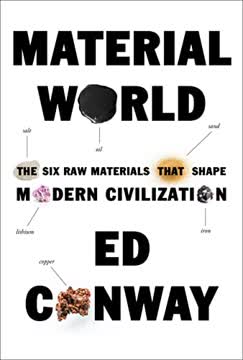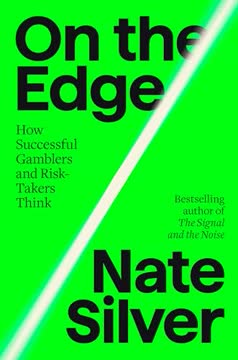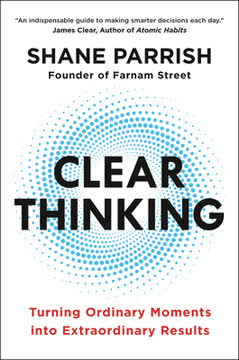Key Takeaways
1. Boost Ideaflow: Generate More Ideas for Better Solutions
"To arrive at a single successful product, 2,000 ideas become 100 working prototypes. Those 100 prototypes become 5 commercial products. Of the final 5, 1 will succeed."
Quantity drives quality. The key to successful innovation is generating a high volume of ideas. This "Idea Ratio" of 2,000:100:5:1 appears consistently across various fields and industries. By focusing on quantity over quality in the initial stages, you increase the likelihood of stumbling upon truly innovative solutions.
Overcome mental barriers. Many people struggle with ideation due to:
- Fear of failure or judgment
- The "creative cliff illusion" (falsely believing creativity is depleted)
- Anchoring bias (fixating on initial ideas)
- The Einstellung effect (difficulty seeing alternative solutions)
To combat these barriers:
- Defer judgment during ideation
- Push past the perceived creative limit
- Seek diverse inputs and perspectives
- Use techniques to break mental patterns
2. Implement a Daily Idea Quota to Enhance Creativity
"Creativity is a capacity you train and develop like physical strength or flexibility. Without proper technique and regular effort, generating ideas is exhausting and often unproductive."
Establish a daily practice. Incorporate a simple three-step process into your routine:
- Seed: Select a problem to focus on before bed
- Sleep: Allow your subconscious to process the problem
- Solve: Write down at least 10 ideas in the morning, regardless of perceived quality
Benefits of the Idea Quota:
- Trains your brain to generate ideas on demand
- Desensitizes you to the discomfort of expressing "bad" ideas
- Provides a constant stream of potential solutions to various problems
- Increases overall creative output and problem-solving capacity
To maximize the effectiveness of your Idea Quota:
- Use a dedicated notebook or digital tool to capture ideas
- Review and refine your ideas regularly
- Share and discuss your ideas with others to spark new insights
3. Utilize Group Brainstorming Effectively with the Right Approach
"To reap Osborn's promised benefits. The method of group idea generation we teach at the d.school and at organizations around the world leads to very different outcomes than those you've probably experienced."
Optimize group dynamics. Effective brainstorming requires:
- Small groups (3-6 people)
- A mix of relevant expertise and fresh perspectives
- Clear problem framing and guidelines
- A facilitator to maintain energy and participation
Structure the session:
- Warm up with quick, low-stakes exercises
- Use prompts or "How Might We" questions to spark ideas
- Encourage rapid idea generation without judgment
- Build on others' ideas with "Yes, and..." statements
- Aim for quantity over quality initially
Maximize creative output:
- Alternate between individual and group ideation
- Set concrete targets (e.g., 100 ideas in an hour)
- Use visual aids like whiteboards or sticky notes
- Create a safe, judgment-free environment
- Follow up with idea review and refinement sessions
4. Create an Innovation Pipeline to Test and Validate Ideas
"To make all this testing feasible, we're going to have to get scrappy by designing simple, cheap, and imperfect experiments that deliver just enough information to design better, higher-fidelity experiments down the road."
Establish a systematic approach. An effective innovation pipeline includes:
- Idea generation (using techniques from previous takeaways)
- Initial screening and portfolio creation
- Rapid prototyping and testing
- Iteration based on feedback and results
- Scaling successful concepts
Key principles:
- Test assumptions early and often
- Embrace failure as a learning opportunity
- Maintain a diverse portfolio of ideas
- Use data to drive decision-making
Implement practical steps:
- Create a "corkboard R&D department" for idea collection and tracking
- Develop clear criteria for idea evaluation and prioritization
- Allocate resources for rapid experimentation
- Establish regular review meetings to assess progress and pivot when necessary
5. Design Quick, Cheap Experiments to Maximize Learning
"A well-designed experiment delivers a big payload of actionable information in return for a tiny amount of time, energy, and money."
Prioritize speed and efficiency. Effective experiments should:
- Test a single, specific assumption
- Provide clear, actionable data
- Require minimal resources to execute
Examples of low-cost experiments:
- Landing pages for non-existent products
- Paper prototypes or mockups
- Wizard of Oz testing (simulating functionality manually)
- A/B testing of marketing messages or designs
- Pop-up stores or limited product runs
Maximize learning:
- Set clear hypotheses and success criteria
- Measure behavior, not just opinions
- Analyze results quickly and iterate
- Share learnings across the organization
- Use failures to inform future experiments
6. Mine Diverse Perspectives to Spark Creative Breakthroughs
"Striking sparks leads to creative conflagrations."
Seek out diverse inputs. Cultivate a portfolio of perspectives by:
- Forming learning circles with people from different fields
- Engaging in regular correspondence with diverse thinkers
- Creating customer councils for direct feedback
- Cross-pollinating ideas across departments or industries
Leverage different viewpoints:
- Inexperienced experience: Fresh eyes on familiar problems
- Novice observations: Insights from those new to a field
- Complementary collaborators: Partnerships that balance strengths
- Analogous exploration: Studying similar challenges in unrelated fields
Foster an environment of open exchange:
- Create psychological safety for sharing ideas
- Encourage candid feedback and constructive criticism
- Celebrate diverse thinking and unconventional approaches
- Regularly expose team members to new experiences and perspectives
7. Shake Up Your Perspective to See New Opportunities
"You don't innovate in the pickle business by eating cucumbers all day."
Challenge assumptions. Use techniques like:
- Assumption Reversal: Deliberately flip your beliefs about a situation
- Empathetic Interviews: Deeply understand users' experiences and emotions
- Extended Observation: Look longer and more closely at familiar situations
Broaden your view:
- Conduct Wonder Wanders: Take walks to spark unexpected connections
- Explore analogous fields: Study unrelated industries for inspiration
- Embrace constraints: Use limitations to drive creative thinking
Practical exercises:
- Visit businesses outside your industry to study their approaches
- Roleplay as your competitors or customers
- Use random prompts or objects to spark new ideas
- Regularly expose yourself to unfamiliar experiences and environments
8. Stoke Curiosity with Provocative Questions and Frames
"A good question is specific. For instance, think of white things. What comes to mind, and how swiftly? Now, think of white things you find in the typical refrigerator. Do you notice the difference?"
Craft powerful questions. Use "How Might We" (HMW) questions to frame problems and spark ideas. Adjust these dimensions:
- Scale: Zoom in or out on the problem
- Quality: Explore extremes (best/worst case scenarios)
- Emotion: Consider different emotional states or responses
- Stakes: Raise or lower the importance of the situation
- Expectations: Challenge assumptions about how things should work
- Similarity: Draw analogies to unrelated fields or situations
Generate multiple frames. Create a portfolio of questions to explore different aspects of a problem. For example:
- How might we make ice cream a social experience?
- How might we design an ice cream cone that prevents melting?
- How might ice cream become a symbol of celebration?
Use prompts to spark ideas:
- Subtract: Remove elements instead of adding
- Run a retroactive: Imagine future failure to identify potential issues
- Generate un-ideas: Explore the opposite of what you're trying to achieve
- Observe, imitate, and diverge: Study existing solutions and build upon them
9. Encourage Creative Collisions Through Diverse Inputs
"The majority of business men are incapable of original thinking because they are unable to escape from the tyranny of reason. Their imaginations are blocked."
Feed your brain. Cultivate a steady diet of diverse inputs:
- Read widely across disciplines
- Attend lectures or conferences outside your field
- Engage in hobbies or artistic pursuits
- Travel and expose yourself to new cultures and experiences
Create opportunities for serendipity:
- Schedule regular "exploration time" for yourself and your team
- Encourage cross-departmental collaboration and job rotations
- Host events that bring together people from different backgrounds
- Create physical spaces that promote chance encounters and conversations
Leverage technology:
- Use tools like random article generators or creative prompt apps
- Explore virtual reality or augmented reality experiences
- Engage with online communities outside your usual circles
- Use AI-powered tools to generate unexpected connections
10. Embrace Tactical Withdrawals to Untangle Creative Knots
"To move forward, step back."
Recognize the need for breaks. Signs it's time for a tactical withdrawal:
- Feeling stuck or going in circles on a problem
- Experiencing tunnel vision or fixation on one approach
- Unable to summarize your thoughts or organize key points
Effective withdrawal tactics:
- Take a walk or engage in light physical activity
- Switch to an unrelated task or project
- Pursue a hobby or creative outlet
- Take a short nap or meditate
- Engage in a "cool" medium like reading or listening to music
Maximize the benefits:
- Frame the withdrawal as a strategic move, not procrastination
- Set a specific time to return to the problem
- Allow your subconscious to work on the problem in the background
- Be ready to capture insights when they arise unexpectedly
By embracing these tactical withdrawals, you create space for your mind to make new connections and approach problems with fresh perspective.
Last updated:
FAQ
1. What is Ideaflow: The Only Business Metric That Matters by Jeremy Utley and Perry Klebahn about?
- Core concept: The book argues that the rate of idea generation—termed "ideaflow"—is the most crucial metric for business innovation and long-term success.
- Creativity as a skill: It reframes creativity as a learnable, daily practice rather than a rare talent or moment of inspiration.
- Practical system: The authors provide a structured approach to generating, testing, and implementing ideas, both individually and within organizations.
- Audience: The book is aimed at entrepreneurs, leaders, and anyone seeking to improve creative problem-solving and innovation capacity.
2. Why should I read Ideaflow by Jeremy Utley and Perry Klebahn?
- Demystifies creativity: The book breaks down creativity into actionable, teachable skills, helping readers overcome self-doubt and skepticism.
- Proven, research-backed methods: Drawing on years of teaching at Stanford’s d.school and consulting with top companies, the authors share practical tools and real-world examples.
- Measurable innovation: It introduces ideaflow as a concrete metric, enabling readers to track and improve their creative output and innovation health.
- Builds innovation culture: The book guides leaders on embedding ideaflow into organizational culture for sustainable competitive advantage.
3. What are the key takeaways from Ideaflow: The Only Business Metric That Matters?
- Quantity drives quality: Generating a large volume of ideas increases the likelihood of breakthrough solutions and creative success.
- Experimentation is essential: Rapid, low-cost experiments validate ideas, reduce risk, and accelerate learning.
- Diversity fuels creativity: Harnessing diverse perspectives and backgrounds leads to richer ideaflow and more innovative outcomes.
- Creativity is collaborative: Breakthroughs often emerge from creative collisions and team-based ideation, not solo genius.
4. What is "ideaflow" according to Ideaflow by Jeremy Utley and Perry Klebahn, and why is it the only business metric that matters?
- Definition: Ideaflow is the number of novel ideas generated by a person or group around a problem in a set time—ideas per unit time.
- Foundation of innovation: The authors argue that ideaflow is the root of all future solutions and profits; without it, organizations stagnate.
- Early indicator: Unlike lagging metrics like patents, ideaflow provides early signals of innovation health, allowing timely intervention.
- Predictive power: High ideaflow correlates with greater innovation capacity and adaptability in fast-changing markets.
5. How can I measure my own ideaflow as suggested in Ideaflow by Jeremy Utley and Perry Klebahn?
- Simple exercise: Set a timer for two minutes and write down as many ideas or solutions as possible for a given problem, without judging them.
- Calculate ideaflow rate: Divide the total number of ideas by the time spent to get your ideas-per-minute rate, establishing a personal baseline.
- Track progress: Repeat the exercise regularly to monitor improvements in your creative output over time.
- Psychological safety matters: Low ideaflow may indicate fear or self-censorship, which can be improved by fostering a supportive environment.
6. What is the "Idea Quota" method in Ideaflow and how does it help boost creativity?
- Daily creative warm-up: The Idea Quota is a habit of writing down at least ten ideas every morning, focusing on quantity over quality.
- Reduces self-censorship: By making idea generation routine, it helps desensitize you to fear of judgment and creative blocks.
- Leverages subconscious processing: The "seed, sleep, solve" approach involves priming your mind with a problem before sleep and generating ideas upon waking.
- Builds creative resilience: Regular practice increases ideaflow and makes creative thinking more natural and accessible.
7. What are the common pitfalls of traditional brainstorming, and how does Ideaflow recommend improving group ideation?
- Typical problems: Traditional brainstorming often yields few, timid ideas due to fear of judgment, groupthink, and dominance by extroverts.
- Innovation sandwich method: Alternate between individual idea generation and group sessions to maximize both volume and diversity of ideas.
- Structured process: Use small, diverse groups, warm-up exercises, fast-paced facilitation, and non-judgmental idea capture to boost ideaflow.
- Avoid premature convergence: Encourage deferring judgment and embracing "bad" ideas as seeds for innovation.
8. What is the "Idea Ratio" in Ideaflow by Jeremy Utley and Perry Klebahn, and what does it reveal about innovation?
- Definition: The Idea Ratio is the estimated number of ideas needed to produce one successful outcome—about 2,000 ideas to 1 success.
- Volume over luck: This ratio shows that persistent idea generation, not just talent or luck, is key to innovation.
- Universal principle: The ratio holds across industries, from product design to pharmaceuticals, as seen in companies like IDEO and Dyson.
- Encourages persistence: Understanding the ratio helps teams embrace failure as part of the creative process.
9. How does Ideaflow by Jeremy Utley and Perry Klebahn recommend building and managing an innovation pipeline?
- Pipeline concept: An innovation pipeline is a system for continuously generating, testing, refining, and implementing ideas to prevent bottlenecks.
- Portfolio of experiments: Test a diverse set of ideas in parallel, including both safe bets and ambitious moonshots, to hedge risk and maximize learning.
- Winnowing process: Filter ideas first by stakeholder excitement, then by real-world data from experiments, balancing passion with feasibility.
- Continuous flow: A healthy pipeline ensures a steady stream of validated ideas ready for implementation.
10. What are the seven tools for mining perspectives described in Ideaflow by Jeremy Utley and Perry Klebahn?
- Learning Circles: Regular meetings with diverse participants outside your organization to exchange knowledge and spark new ideas.
- Pen Pals: Ongoing, constructive correspondence with peers or mentors to share unfinished work and insights.
- Customer Council: Engaging super-users or customers early and often for feedback and co-design.
- Cross-pollinate: Mixing strong and weak social ties, including serendipitous encounters, to access non-redundant information.
- Inexperienced Experience, Notice Novices, Complementary Collaborators: Inviting outsiders, valuing newcomers’ questions, and partnering with those with different skills to enrich ideaflow.
11. How does Ideaflow by Jeremy Utley and Perry Klebahn recommend testing and validating ideas?
- Rapid, low-cost experiments: Test assumptions early and cheaply to validate desirability before heavy investment.
- Clear hypotheses: Design each test around a single, measurable assumption, and gather data to inform next steps.
- Iterate and pivot: Use results to refine ideas or change direction, viewing failure as valuable learning.
- Embed experimentation: Make testing habitual at all organizational levels to drive innovation velocity.
12. What advice does Ideaflow by Jeremy Utley and Perry Klebahn give for overcoming creative blocks and getting unstuck?
- Tactical withdrawal: Recognize that stepping away from a problem—through walks, hobbies, or rest—can unlock breakthroughs.
- Productive distractions: Engage in activities that allow mind wandering, like reading or light tasks, to refresh perspective.
- Switch tasks: Working on multiple projects or shifting focus can help unblock creativity.
- Normalize breaks: Leaders should model and encourage strategic withdrawal as a legitimate part of the creative process.
Review Summary
Ideaflow receives mostly positive reviews, with readers praising its practical advice on fostering creativity and innovation in business. Many find the book's concepts applicable and valuable, particularly for generating and testing ideas. Some reviewers appreciate the real-life examples and actionable steps provided. However, a few critics find the book repetitive, overly wordy, or lacking depth in certain areas. Overall, readers consider it a worthwhile read for those interested in enhancing creativity and problem-solving skills in various fields.
Similar Books









Download PDF
Download EPUB
.epub digital book format is ideal for reading ebooks on phones, tablets, and e-readers.




